Comparative Review: iPhone XS vs iPhone X Features
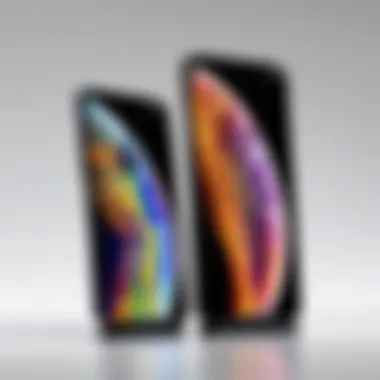

Intro
The mobile tech landscape is always bustling with new innovations, however, a few device models stand out prominently even after their release. Two such models are the iPhone XS and iPhone X. Both represent significant advances in smartphone technology and offer unique features that cater to a variety of users. A closer look at these models reveals a rich tapestry of design choices, performance capabilities, and user experiences that are crucial for anyone thinking of purchasing a high-end smartphone today.
Key Features
When considering the iPhone XS and the iPhone X, it’s important to first explore their key features, which play a critical role in user satisfaction. From design nuances to power under the hood, the differences can often be pivotal in deciding which device suits your needs.
Design and Build Quality
Both devices boast sleek aesthetics and premium materials, yet subtle elements set them apart. The iPhone X introduced the glass back and stainless steel frame, creating a distinct luxurious feel. In contrast, the iPhone XS carries this design further with improved water resistance and durability, thanks to a more refined glass composition.
- Dimensions: The iPhone XS measures slightly more compactly, while both weigh nearly the same, giving a connected experience.
- Colors: The XS includes a gold option alongside the silver and space gray, offering users more to choose from.
- Durability: The newer iPhone has an upgraded rating against dust and water, making it a tad more resilient in everyday use.
"Small updates can make a world of difference in user experience, especially for those who rely on their phones in varied environments."
Display and Performance
The display is where smartphones often shine. With both models featuring a Super Retina HD display, the quality is nothing short of spectacular. The vibrant colors and sharp contrasts make viewing a treat.
- Size: Both sport a 5.8-inch display, but the XS enhances brightness and color accuracy further.
- Performance: Under the hood, the iPhone XS brings the A12 Bionic chip which offers faster processing and a smoother experience when using demanding applications compared to the A11 chip in the iPhone X.
- Battery Life: Users have noted improvements in battery life with the XS, owing to better energy-efficient performance.
Product Specifications
While features give a glimpse into usability, specifications dive deeper into the tech. Understanding the specifications of each device helps clarify potential user expectations and experiences.
Technical Specifications
- Processor:
- Camera System:
- Storage Options:
- iPhone X: A11 Bionic chip
- iPhone XS: A12 Bionic chip
- While both have dual 12MP systems, the XS has enhanced Smart HDR and improved low-light performance.
- iPhone X: 64GB, 256GB
- iPhone XS: Options include 64GB, 256GB, and an enticing 512GB for heavy users.
Compatibility and Connectivity
Both devices support similar connectivity features, including 4G LTE and Bluetooth capabilities. The XS, however, takes a step forward with enhanced LTE speeds and better overall network performance.
In a world where technology evolves faster than one can blink, making an informed choice between these two Apple devices can ensure that you invest in a smartphone that aligns precisely with your lifestyle and usage needs. Stay tuned as we further dissect the user experience between the iPhone XS and iPhone X in the upcoming sections.
Prolusion to iPhone XS and iPhone
The discussion surrounding the iPhone XS and iPhone X reflects not just a comparison of two devices, but a pivotal moment in Apple’s storied history. Released just one year apart, the iPhone XS introduced advancements that illuminated the trajectory of smartphone technology. Exploring these devices reveals insights into Apple’s innovation strategies and their responses to consumer demand.
Grasping the nuances of this comparison hinges upon understanding several key elements: the evolution of design philosophy, the technological enhancements made in the XS, and the relevance of each device in today’s market. The iPhone X was indeed a landmark device, marking the tenth anniversary of the iconic line, showcasing features like Face ID and an edge-to-edge display. In contrast, the XS sought to refine and expand on those very foundations – the type of push that underlines how technology never quite rests still.
Delving into this narrative means unlocking a trove of benefits for the discerning consumer. Whether you are a tech-savvy enthusiast hankering for the latest features or a casual user considering a device that meets everyday needs, understanding these distinctions is critical. Armed with such knowledge, buyers can make informed decisions based on functionality and price considerations.
"Understanding the historical significance of the iPhone XS compared to the X isn’t just enlightening—it's essential for appreciating Apple's ongoing evolution as a tech leader."
This analysis not only highlights the differences between two flagship models but also encapsulates the evolving relationship between mobile technology and consumer expectations. The following sections will explore the rich context from which these devices emerged, presenting a layered examination of Apple's strategic release choices and the broader impact on the smartphone market.
Design and Build Quality
The design and build quality of smartphones holds significant weight in consumers' decision-making processes. In an era where aesthetic appeal and tactile experiences contribute heavily to user satisfaction, both the iPhone XS and iPhone X showcase Apple’s commitment to creating visually stunning devices. A well-crafted phone not only captures attention but also provides durability and a level of prestige that users expect from a flagship product. Understanding the intricate details of the design and material choices in the iPhone XS and X allows potential buyers to assess which device best suits their style and daily usage.
Material Differences
The material choices between the iPhone XS and iPhone X exemplify Apple's continuous pursuit of refinement. The iPhone X introduced a glass back for wireless charging capabilities, providing a smooth feel while maintaining the classic elegance Apple is known for. On the other hand, the iPhone XS keeps this design language but incorporates a more advanced surgical-grade stainless steel frame, offering not only enhanced durability but also a slightly more premium touch.
Additionally, both phones utilize Corning’s durable glass for screens, but the iPhone XS is touted to deliver better durability thanks to a refined glass formulation.
In terms of climate resistance, both devices boast a rating of IP68, meaning they can withstand immersion in water up to a certain depth. This aspect is crucial for those who lead more adventurous lifestyles and require devices that can handle unexpected situations.
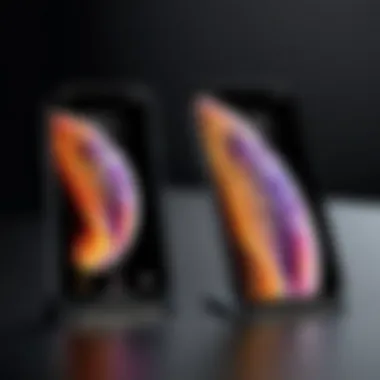
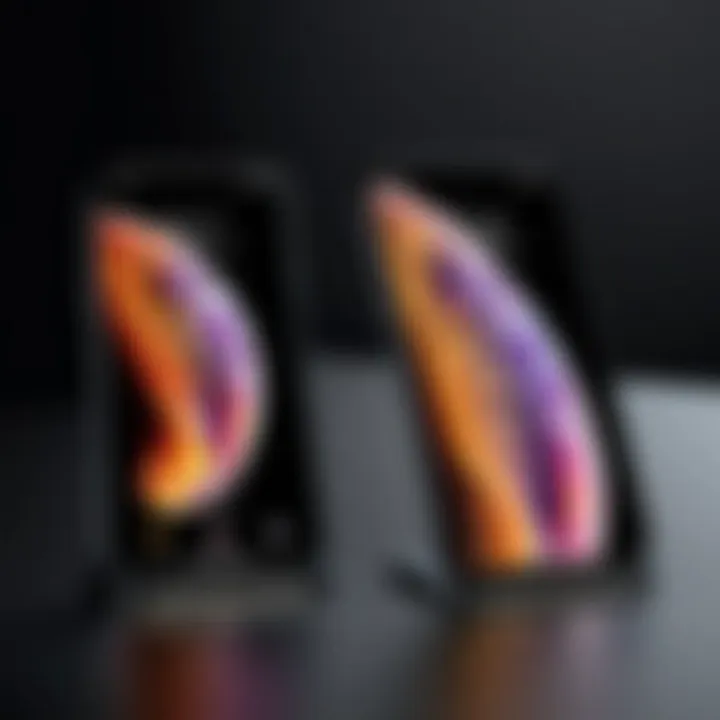
Size and Weight Comparisons
When looking at dimensions, the iPhone XS and iPhone X are designed with a similar form factor. Both smartphones feature a 5.8-inch display, but the XS is minutely more refined, measuring just slightly less in width and depth. This subtle difference is hardly noticeable in practice but contributes to the ergonomics of the phone.
In terms of weight, the iPhone XS tips the scales just a bit more, coming in at 177 grams compared to the X's 174 grams. While this can be attributed to internal hardware, for the average user, the heft of a phone can impact how it feels during prolonged use, thus influencing overall comfort levels.
Color Options and Aesthetic Choices
Color variants also play a significant role in design appeal. The iPhone X was initially offered in silver and space grey, colors that encapsulate Apple’s minimalistic philosophy. However, the iPhone XS expands the palette with the addition of a stunning gold finish, which particularly stands out among competing devices. This variety of choices reflects Apple’s understanding of contemporary consumer preferences—users often look for personalization and uniqueness in their gadgets.
"The right color can change the entire persona of a device, making it feel not just functional but also personal."
Furthermore, the finish on the XS, especially in gold, appears almost luminous under certain lighting, enhancing its visual charm. Such distinctions might seem trivial, but they often sway buyers towards making a choice based on aesthetic inclination as much as functionality.
Display Technology
Display technology plays a crucial role in the user experience of smartphones, especially with high-end devices like the iPhone XS and iPhone X. It influences everything from how content appears on the screen to the overall enjoyment of using the device. When evaluating two flagship models, it is essential to look at various elements like screen specifications, brightness, and color accuracy. These factors can significantly affect not only daily usability but also how users interact with multimedia content such as photos, videos, and games.
Screen Specifications
The iPhone XS and iPhone X both feature a 5.8-inch Super Retina display. However, the XS benefits from some enhancements in the specifications. The resolution remains at 1125 x 2436 pixels, providing a pixel density of around 458 ppi, ensuring that images and text are sharp and detailed. The screen supports HDR and True Tone technology, which adjusts the white balance based on ambient light to create a more natural viewing experience. Coupled with OLED technology, users can expect deeper blacks and vibrant colors.
Brightness and Color Accuracy
When it comes to brightness, both models offer impressive performance, with peak brightness levels that allow for usability even in direct sunlight. The iPhone XS can reach a maximum brightness of 625 nits, while the X peaks at 621 nits. This slight difference might seem trivial, but in practical terms, it means that the XS can display slightly more vivid content under extremely bright conditions.
Color accuracy is another area where these devices shine. The displays of both the XS and the X cover a wide color gamut, approximately 60% of the Adobe RGB space. This translates to more lifelike colors in images and videos. Reviews highlight that, especially for photography and graphic design, having accurate colors is non-negotiable.
"A smartphone's display is like its window to the world. If the colors are off, the entire experience falters."
User Experience in Different Lighting Conditions
User experience in varying lighting conditions is vital, particularly for those who frequently use their phones outdoors or in dimly lit environments. Both the iPhone XS and X are equipped with technology that adapts to changing light. In bright sunlight, the adaptive brightness features enable users to view their screens without straining their eyes. Conversely, in darker settings, the displays can dim appropriately, helping to reduce glare.
However, the XS has a slight edge due to its superior brightness capabilities and finer calibration. Users have reported better visibility and less eye fatigue when switching between different environments, which enhances overall usability. Additionally, the Auto-Brightness feature works effectively on both models, ensuring that settings can change dynamically based on user preferences and surroundings.
Performance Analysis
Understanding performance is crucial in evaluating the iPhone XS and iPhone X. Performance encompasses a variety of metrics that directly affect user experience, especially in today's fast-paced digital world. Smartphone users frequently rely on their devices for a multitude of tasks ranging from simple phone calls and messaging to resource-intensive applications such as gaming and photo editing. An effective performance analysis allows consumers to grasp how each device stacks up in these areas. It also informs potential buyers of the longevity and efficiency they can expect from their investment.
Chipset Comparison: A12 Bionic vs. A11 Bionic
When examining the iPhone XS and iPhone X, the heart of the devices lies in their chipsets. The iPhone XS is equipped with the A12 Bionic chip, whereas its predecessor, the iPhone X, runs on the A11 Bionic chip. The difference here is not trivial. The A12 Bionic showcases a superior 7nm process technology, promising faster performance and better energy efficiency compared to the A11 Bionic’s 10nm technology.
- Speed and Efficiency: With a six-core setup, the A12 Bionic operates smoother in demanding applications, leading to noticeable improvements in speed during multitasking.
- Neural Engine: The A12 also includes an enhanced Neural Engine, enabling advanced machine learning tasks like facial recognition to perform quicker and more accurately.
This chip comparison is especially relevant for gamers, and users who rely heavily on apps featuring augmented reality. One could argue that the A12 efficiently sets the stage for future-proofing the device, thus enhancing its relevance in an ever-evolving tech landscape.
Real-World Performance Benchmarks
Diving into what the specs translate to in everyday use is where the real importance surfaces. Performance benchmarks often paint a clear picture of how devices compete in real life. Test results have illustrated that the iPhone XS leads the chart in several key areas:
- Geekbench Scores: The A12 Bionic scores significantly higher in single-core and multi-core performance, displaying a marked difference in handling intense applications.
- Graphics Performance: The A12 outshines its predecessor in GPU benchmarks, providing richer graphics capabilities that enhance gaming and video playback.
- Load Times: Users experience faster load times in apps on the XS, which lays the groundwork for a smoother user experience overall.
"In today’s smartphone market, the gap in performance can hugely impact user satisfaction. A device's ability to handle everyday tasks efficiently often sways purchase decisions."
Gaming and Multi-tasking Capabilities
For many users, the ability to game or multitask is a top priority. The shift from the A11 to the A12 Bionic chips significantly enhances these aspects.
- Gaming Performance: With improved graphics and processing speeds, the iPhone XS can run intense gaming applications like ‘Fortnite’ and ‘Call of Duty Mobile’ at higher frames per second compared to the iPhone X. This advantage translates to a better gaming experience, one where frame drops or lag become a distant memory.
- Multitasking: The A12’s architecture not only provides speed but ensures efficient resource management. Switching between apps is seamless, freeing users from the frustration of loading screens that can often plague older devices.
Camera Features
In today's smartphone market, the camera is often the feature that draws the most attention. As social media platforms burgeon with visuals, a phone's camera capabilities can make or break its appeal to consumers. This section delves into the camera functionality of the iPhone XS and iPhone X. It will touch on specifications, performance in various conditions, and video recording abilities—all key aspects for anyone looking to maximize their photography and videography experiences.
Camera Specifications Overview

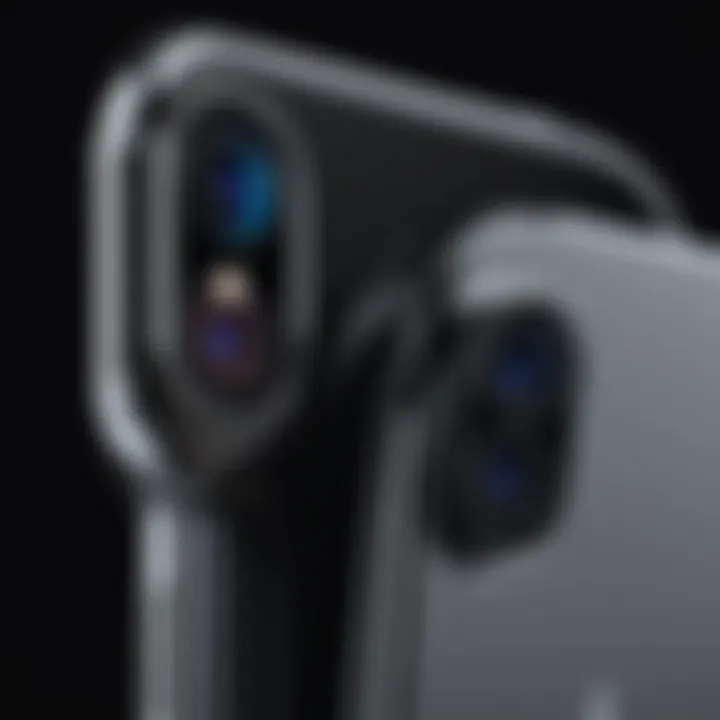
Both the iPhone XS and iPhone X sport impressive camera capabilities. The iPhone X has a dual 12 MP rear camera system, featuring a wide-angle lens with an aperture of f/1.8 and a telephoto lens with an f/2.4 aperture. This setup allows users to achieve stunning bokeh and detailed portrait shots. On the other hand, the iPhone XS builds on this solid foundation with improvements under the hood. It, too, has a dual 12 MP camera system, but introduces Smart HDR which enables better highlight and shadow detail. The aperture remains the same, but the XS incorporates a faster sensor, leading to faster focus and more vibrant photos.
Here are the key specifications:
- iPhone X: 12 MP Dual Cameras (f/1.8 and f/2.4)
- iPhone XS: 12 MP Dual Cameras (f/1.8 and f/2.4) with Smart HDR
While both smartphones promise stunning shots, the enhancements in the XS make it a more compelling choice for photography enthusiasts.
Photography in Various Conditions
When it comes to capturing images in a variety of environments, both phones do a commendable job. However, the differences in performance become apparent when lighting conditions change.
In low-light settings, the iPhone X holds its own, delivering images that are practically usable with minimal noise. Nevertheless, the iPhone XS demonstrates a significant edge, especially due to its improved sensor technology. Photos taken at twilight or inside dimly lit cafes exhibit a clarity and detail that often exceeds expectations.
Moreover, the XS benefits from advanced computational photography techniques, like the aforementioned Smart HDR, which works wonders in challenging lighting.
- Pros of iPhone XS:
- Pros of iPhone X:
- Elimination of overexposure and underexposure
- Better detail in shadows
- Less noise in photos
- Solid low-light performance
- Reliable results despite lesser technology
Ultimately, while both cameras can rise to the challenge, the XS is engineered to harness and refine light more effectively.
Video Recording Capabilities
Video recording is another crucial feature when evaluating the prowess of a smartphone's camera system. Both the iPhone XS and the iPhone X can record up to 4K at 60 frames per second, a standard that meets the desire for high-quality video content.
However, the XS steps it up with enhanced stabilization technology, leading to smoother footage even during motion-heavy scenarios, such as while walking or biking. The addition of Smart HDR for video further enriches the dynamic range, ensuring that highlights remain intact while shadows portray rich details.
- iPhone X Video Features:
- iPhone XS Video Features:
- 4K recording
- 1080p HD video recording at 60 fps
- Optical image stabilization
- 4K recording with improved stabilization
- Slow-motion video capabilities at 240 fps
- Smart HDR during recording
"The ability to shoot in various conditions is what separates great smartphones from average ones."
With these insights into the camera features, it's clear that while both the iPhone X and XS deliver impressive results, the XS's technological advancements make it the more compelling option for the discerning user.
Battery Life and Charging
Battery life and charging capabilities are vital aspects to consider when evaluating smartphones, particularly flagship models such as the iPhone XS and the iPhone X. For many users, a smartphone's longevity on a single charge can make or break their daily experience. As technology continues to advance, the demand for longer-lasting batteries and efficient charging methods has only intensified. Understanding these elements not only informs potential buyers but also assists current users in maximizing their devices' capabilities. Let’s delve deeper into the intricacies of battery specifications, charging technologies, and practical real-world performance comparisons.
Battery Specifications
Both the iPhone XS and iPhone X showcase impressive battery technologies designed to support demanding daily use. The iPhone X houses a 2,716 mAh battery, while the XS slightly bumps that to 2,658 mAh. At first glance, these numbers might seem similar; however, when considering the overall usage and energy efficiency of each model, the battery specs reveal important differences.
The A12 Bionic chip in the XS is designed to be more energy-efficient than its predecessor, the A11 Bionic found in the X. This efficiency could translate to extended usage times. Additionally, users will often find the overall power management capabilities between different iOS versions to be crucial. Regular software updates from Apple optimize battery life through enhanced resource allocation, further affecting how long the phone stays powered throughout the day.
Charging Technology: Wired and Wireless
When it comes to charging, both models offer compatibility with Apple's proprietary wired and wireless charging solutions. The iPhone XS and iPhone X support fast charging via Lightning cable, allowing users to achieve approximately 50% battery life in about 30 minutes with a compatible 18W or higher charger. This is particularly beneficial for those who are frequently on the go and need a quick top-up.
On the other hand, these iPhones also embrace Qi wireless charging technology. This feature offers convenience for users who prefer simply placing their phone on a charging pad rather than fumbling with cables. However, it’s worth noting that while wireless charging is convenient, it tends to be slower than wired fast charging. Users looking for the quickest charge often steer clear of wireless options for more demanding charging sessions.
Real-World Battery Life Testing
In real-world testing, the user experience with battery life can vary based on individual usage patterns, highlighting the practical implications of the specifications. Many users report that the iPhone X holds up well under demanding tasks such as video streaming, gaming, and social media browsing, typically lasting a full day.
Conversely, the iPhone XS has been noted by some users to provide a more robust battery performance, especially during tasks that can deplete power quickly. In a mixed-use environment, some reviews mention that the XS can often stretch through an additional hour of active use compared to the X.
In general, users might assess battery performance by:
- Monitoring daily usage habits
- Adjusting display settings (like brightness)
- Utilizing low power mode during intense usage periods
The bottom line is that while both the iPhone XS and the iPhone X provide adequate battery life for day-to-day use, the XS offers slightly enhanced features and efficiency. Understanding how to leverage charging technologies – whether through wired or wireless methods – can further improve the user experience and help users make informed decisions on managing their device's power.
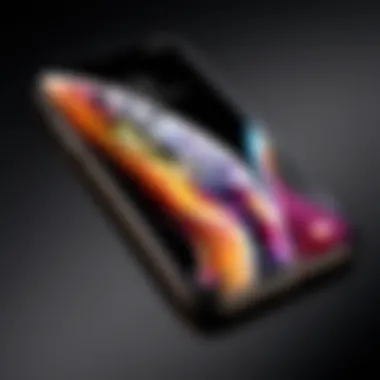
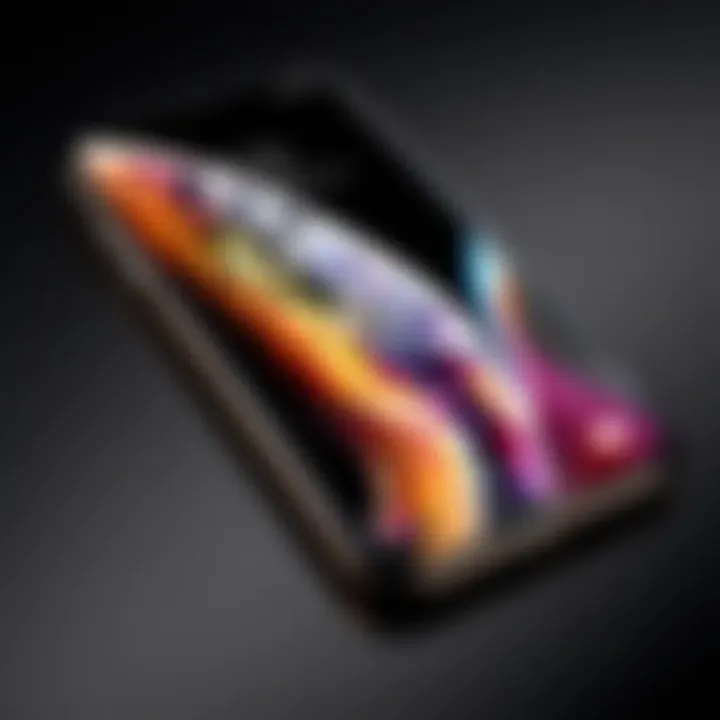
Software and User Experience
In the fast-evolving world of smartphones, the software running the device can often make or break the user experience. The software's role is not merely to support the hardware; it shapes how users interact with their devices on a daily basis. In this comparison between the iPhone XS and iPhone X, understanding the software nuances and user experience options is pivotal. Factors like the operating system, user interface features, and app performance all contribute to the daily usability and satisfaction of these flagship devices.
Operating System Differences
Both the iPhone XS and iPhone X originally launched with distinct versions of Apple's iOS. The XS hit store shelves with iOS 12, while the X initially paired with iOS 11. While both models can be upgraded to later versions, the difference in their launch operating system introduces subtle shifts in performance and user experience.
The iPhone XS benefits from optimizations that come with newer OS versions, enhancing security and efficiency. With iOS 12, users noticed improvements in speed and app responsiveness, as well as features like Screen Time, which weren't present in earlier versions. These optimizations provide the XS with a smoother interaction flow, especially in multitasking scenarios. Conversely, the iPhone X can support these updates but might not deliver the same level of seamless performance, especially as apps are continuously tailored to leverage newer hardware capabilities.
User Interface Enhancements
When it comes to user interface design, both devices retain the core Apple philosophy: simplicity combined with elegance. However, the XS introduces several enhancements that improve overall user engagement. For example, the XS utilizes a more advanced version of the Face ID technology. This facial recognition system works faster and more accurately, catered for varied lighting conditions. Users can unlock their device quickly and securely, which is an essential aspect of day-to-day usage.
Additionally, the introduction of features like grouped notifications in iOS 12 offers a more organized alert system on the XS. Users can easily manage their notifications without the clutter, enhancing the intuitive feel of the interface. Recognizing that not all users cherish a crowded screen, these updates bring peace of mind through organization.
App Performance and Availability
The app ecosystem is another crucial area where differences in software matter. With the A12 Bionic chip in the XS, apps often load quicker and run more effectively, especially resource-heavy applications like games or photo editing tools. The inherent capacity for superior multitasking in XS makes it more adept at managing demanding apps compared to the X.
Furthermore, as iOS evolves, developers frequently lapse into optimization cycles, enhancing their applications for newer hardware. Therefore, users of XS may experience more frequent updates or access to functions that push the limits of performance, while those sticking with an older model like the X might lose out on certain capabilities. As a result, the XS may offer a better experience when engaging with cutting-edge apps, making it an attractive option for tech enthusiasts who want to stay ahead of the curve.
"The software experience can redefine how we use smartphones and impacts everything from everyday tasks to specific applications that demand higher processing efficiency."
Price Considerations
Price is an ever-important factor when it comes to smartphones, and for the iPhone XS and iPhone X, it’s no different. Both models attracted a lot of attention when they were launched, but their pricing and market dynamics have evolved over time. Understanding the pricing of these gadgets not only helps consumers gauge their value but also reveals insights into Apple's strategy and consumer behavior.
Launch Prices and Current Market Trends
Both iPhones were premium offerings at their launch. The iPhone X debuted in 2017 with a starting price of $999 for the base model, while the iPhone XS, launched in 2018, carried a higher price tag of $999 as well, for the same storage capacity. However, the different launch prices reflect the evolution of features and technology.
As we moved further from their launch dates, market trends shifted. After the release of newer models like the iPhone 11 and 12, the market saw these devices' prices fluctuate. The iPhone X started to dip, and currently it can be found for somewhere between $400 to $600, depending on the condition and storage options. On the other hand, the iPhone XS retains a bit more value, with current prices hovering around $600 to $800. This trend points out not only how depreciation works but also how consumer preference plays a crucial role in maintaining value.
Resale Value Analysis
When considering the resale value, several factors come into play. The iPhone XS, with its recent technology and additional features, has a higher resale value compared to the iPhone X. Key reasons include its improved camera system, high-performance A12 chip, and additional features like dual SIM capabilities.
Factors affecting resale value include:
- Condition of the Device: Well-maintained devices fetch a better price.
- Market Demand: As newer models are released, older variants slowly lose their desirability.
- Storage Capacity: Higher storage variants generally yield a better resale value.
Moreover, consumer perception plays a role too; people often think twice before investing in older technology, especially when a slightly newer model offers a more satisfying experience.
Cost-Benefit Analysis for Consumers
When it comes to making a purchase decision, looking at the cost versus benefits becomes invaluable. For potential buyers weighing the decision between the iPhone XS and the iPhone X, it's essential to consider what each model offers relative to their price.
- iPhone X Costs: With a lower price point today, it may seem like a bargain for those who need a reliable iPhone without the stress of overspending. However, you might miss out on newer functionalities.
- iPhone XS Benefits: While it may cost more upfront, the XS provides better performance, enhanced camera capabilities, and improved battery life, making it a more worthwhile investment if you plan to keep your phone for several years.
Deciding whether to spend more on the latest model ultimately depends on personal preferences and usage requirements. If you’re a casual user who values reliability and doesn’t need the latest frills, the iPhone X might do just fine. Meanwhile, for tech enthusiasts who want the best tech that Apple offers, the iPhone XS is likely worth its higher price tag.
"In the world of smartphones, investing in a device isn't just about the initial purchase; it's about the value it continues to deliver over time."
The End
The topic of concluding an in-depth analysis on the iPhone XS and iPhone X holds significant weight. It encapsulates the critical findings and brings clarity to the multifaceted discussion presented in this article. A well-structured conclusion is not merely a summary; it serves as a reflection and solidifies the relevance of the comparative points made, allowing readers to grasp the broader picture.
Summarizing Key Findings
In our exploration, several key findings surfaced that distinguish the iPhone XS from its predecessor, the iPhone X. Here are notable points to consider:
- Design and Build: While both phones share a similar aesthetic, the XS offers subtle refinements in materials and overall durability. This includes better water resistance and a more robust glass finish.
- Performance Upgrade: The A12 Bionic chip in the XS provides a marked improvement in processing power, which translates to smoother performance in apps and games, especially in multitasking scenarios.
- Camera Innovations: The XS comes equipped with features like Smart HDR and enhanced low-light performance, making it a preferable choice for photography enthusiasts, particularly in challenging lighting conditions.
- Battery and Charging: Although both models have commendable battery life, the XS edges out slightly with improved efficiency, providing longer usage on a single charge.
Final Thoughts on Choosing Between XS and
When faced with the decision between the iPhone XS and the iPhone X, consumers are ultimately weighing their personal needs against the technological capabilities of each device.
For individuals heavily invested in photography, gaming, or demanding multitasking, the iPhone XS tends to provide a richer experience thanks to its upgraded hardware and software enhancements. Alternatively, for those who prioritize a more budget-friendly option while still desiring a quality smartphone, the iPhone X remains a powerful device that still performs admirably.
Ultimately, the choice boils down to how one views value. The iPhone XS's enhancements may speak to tech-savvy individuals who love having the latest innovations, while the iPhone X continues to serve as a solid smartphone choice, actionable and efficient for daily use.
In essence, your decision should align with your lifestyle and technology expectations; whether you gravitate towards the cutting-edge features of the XS or the reliable performance of the X, each model presents its advantages in the vast sea of smartphone choices.



